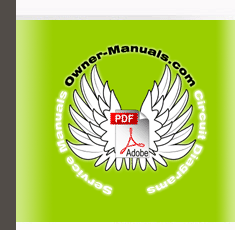|
|
|
Categories
|
|
Information
|
|
Featured Product
|
|
|
 |
|
|
There are currently no product reviews.
 ;
Thank´s for your help, I already recived these manual from you
 ;
Thank you for your manual It has the basic things to and i use the Oszi for Longer Time.
THX
 ;
Actually, I was looking for this information for 3 years!...now thanks to you, the manual is on my hands and of great help, cause I understand now where I was doing wrong connections and wires...excellent, I'll be back to you if in need, thank you.
 ;
This manual covers the main equipment features only. While it also includes the procedure for saving and loading from the now long obsolete memory cards it does not mention the how to operate with the optional floppy drive interface so I am still at a loss about how to use this! Note that there is a separate manual covering the MIDI interface and programming via the keyboard, not included in this download. You will also need to get hold of this if you want to use the MIDI interface properly. Basically there is little difference between this manual and the free to download manual for the similar PR60 model.
 ;
Good list of manuals. I found a very rare one and easily get. Should be promptly to download, as we must to wait hours even after confirmed payment.
Operation
Power
When the unit is plugged in and no signal is received for approximately 10 � 15 minutes, the subwoofer will go into a standby mode until a signal is present. Due to JBL�s unique, high-efficiency digital-amplifier design, power consumption is minimal when the subwoofer is not receiving a signal.
Level Control
The subwoofer Level Control, located on the rear panel, adjusts the volume of the subwoofer relative to the rest of the system. Proper level adjustment depends on several variables such as room size, subwoofer placement, type of main speakers and listener position. Adjust the subwoofer level so that the volume of the bass information is pleasing to you.
Crossover Adjustments
Low-Pass Control The Low-Pass control determines the highest frequency at which the subwoofer reproduces sounds. If your main speakers can comfortably reproduce some low-frequency sounds, set this control to a lower frequency setting, between 50Hz � 100Hz. This will concentrate the subwoofer�s efforts on the ultradeep bass sounds required by today�s films and music. If you are using smaller bookshelf speakers that do not extend to the lower bass frequencies, set the low-pass crossover control to a higher setting, between 120Hz � 180Hz.
120
High Pass
90 60
150 180
High-Pass Control � If you hooked up your subwoofer as shown in Hookup 3 on page 5, you also have the capability of adjusting the high-pass frequency. The High-Pass control determines the frequency at which the main speakers
180
speakers that do not extend to the lower bass frequencies, set the high-pass crossover control to a higher setting, between 125Hz � 180Hz. With this setting, your main speakers will not have the burden of reproducing any low-frequency sounds. � If you hooked up your subwoofer as shown in Hookup 1 on page 3, the high-pass frequency is fixed at 180Hz. � If you hooked up your subwoofer as shown in Hookup 2 on page 4, there is no high-pass control. Unless your receiver/amplifier incorporates a high-pass crossover, your main speakers will continue to get a full-range signal.
Final adjustment and blending of the low-pass and high-pass controls may evolve over several listening sessions. A good starting point would be to set both the low- and high-pass controls to the same frequency and adjust from that point.
Level
Min Max
Phase
0 120
Low Pass
90 60
150 180
will start reproducing sounds. If your main speakers can comfortably reproduce some low-frequency sounds, also set this control to a lower frequency setting, between 50Hz � 100Hz. This will concentrate the subwoofer�s efforts to the ultradeep bass sounds, while your main speakers continue to reproduce the mid-bass information. If you are using smaller bookshelf
�6�
|
|
 |
> |
|
